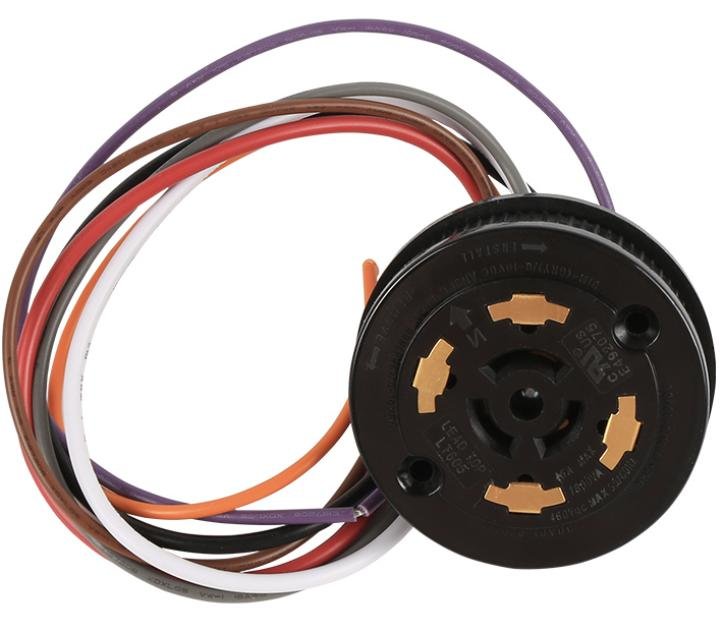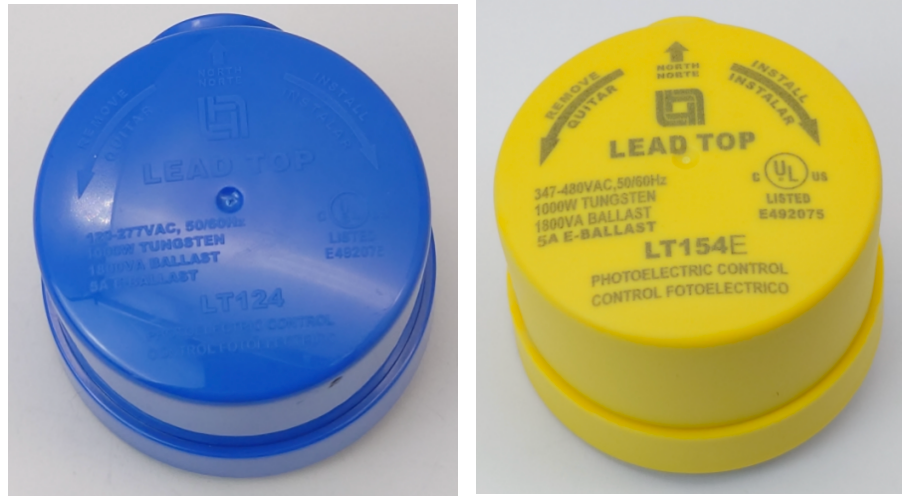Differentiating between NEMA 5P and NEMA 7P photo controls is quite strenuous for the majority of buyers. Although their practicality and usage scenarios vary notably, both are widely applied in outdoorsy lighting applications. Selecting the best-fit photo sensor guarantees better lighting show, energy efficiency, and integration with smart lighting systems. Understanding these differences can help municipalities, contractors, and lighting professionals select the most suitable option for their specific needs.
In this blog, we will break down the key differences between NEMA 5P and NEMA 7P dusk to dawn sensor to help you make an informed decision.

1. Basic Functions and Wiring Differences
NEMA 5P photocells are mainly utilized for standard lighting in streetlights, parking areas, and commercial establishments. Their main function is to provide basic on/off control based on the available light levels, making them a cost-effective choice for standard dusk-to-dawn lighting applications. In comparison, NEMA 7P photocells integrate a more intelligent and adaptable lighting control system. These photocells are designed for advanced smart lighting systems, integrating features such as dimming, remote control, and IoT-based automation. The fundamental difference between these two types of photo cell lies in their number of wires и control capabilities:
| Feature | NEMA 5P Photo cell | NEMA 7P Photo control |
| Number of Wires | 5 Wires | 7 Wires |
| Basic ON/OFF Control | Yes | Yes |
| Dimming Control | Yes (0-10V or DALI) | Yes (0-10V, DALI, PWM) |
| Communication Function | No | Yes (RS-485, DALI, Zigbee, LoRa, Bluetooth, etc.) |
| Remote Monitoring & Control | No | Yes |
| Energy Data & Fault Detection | No | Yes |
The extra two wires in a NEMA 7P photocontrol allow for advanced smart features, making it a better choice for projects requiring connectivity and remote control. However, if these features are not needed, a 5P model can be a more economical choice without compromising on lighting efficiency.
2. When to Choose a NEMA 5P Photo sensor
А NEMA 5P photo control is ideal for applications that require basic ON/OFF switching and automatic dimming without remote control. It is commonly used in:
Streetlights with midnight dimming to save energy.
Parking lot lights where a simple dimming function is required.
Outdoor area lighting with predefined dimming schedules.
For projects focused on reducing power consumption without requiring remote control or communication, a NEMA 5P photocontrol offers a cost-effective solution. This model is easy to install and widely compatible with standard dimmable LED drivers. A major perk of choosing a NEMA 5P photosensor is that it’s more affordable. NEMA 7P photocells bring smart technology with dimming and remote capabilities, while NEMA 5P models keep things simple, cost-effective, and easy to set up. This makes them a practical choice for projects with limited budgets or for areas where basic automation is sufficient.
3. When to Choose a NEMA 7P photoelectric sensor
А NEMA 7P light sensor switch is designed for smart lighting systems that require remote monitoring, real-time adjustments, and energy data collection. It is suitable for:
Smart city streetlights that integrate with IoT networks.
Large-scale lighting projects needing remote control and fault detection.
Industrial or commercial lighting requiring advanced energy management.
NEMA 7P photocontrols allow cities and businesses to optimize their lighting networks, reducing maintenance costs and ensuring consistent lighting performance through centralized control systems.They are commonly paired with cloud-based lighting control platforms. A NEMA 7P regulator is the ideal option for setups that permit luminance adjustment. Its seven-pin configuration includes dedicated wiring for 0-10V dimming, allowing lights to adjust brightness levels based on real-time environmental conditions or scheduling preferences.This proves especially beneficial for implementations such as intelligent roadway illumination, high-end commercial lighting, and industrial facilities, where reducing energy consumption and light pollution is a priority.
4. Common Misconceptions
When evaluating NEMA 5P versus NEMA 7P photo-sensitive devices, many people have misunderstandings about their functionality, applications, and benefits. These misconceptions can lead to selecting the wrong sensor for a specific lighting setup. Below are some of the most common myths and the truths behind them:
More wires mean better performance – While NEMA 7P dusk to dawn photocell
offer advanced functionality, they are not always necessary for simple applications.
All 5P and 7P light sensor are interchangeable – The extra wires in 7P units are for communication and monitoring, which means they require compatible smart lighting systems.
NEMA 7P is always better – If remote monitoring isn’t needed, a NEMA 5P photo sensor is a cost-effective and efficient choice.
Lastly, some believe that NEMA 7P sensors automatically save more energy than NEMA 5P. While the added dimming and adaptive lighting features of NEMA 7P can enhance energy efficiency, they only provide savings if properly programmed and managed. In contrast, a well-placed NEMA 5P sensor in a standard application can be just as effective in reducing unnecessary energy consumption.
Understanding these misconceptions can help in making an informed decision based on the actual needs of a lighting system rather than assumptions about feature superiority or energy savings.
5. Conclusion: Choosing the Right outdoor photocell light sensor for Your Project
The best choice depends on your specific project requirements :
If you need basic switching and dimming, a NEMA 5P photocell lighting sensor is sufficient.
If your project requires remote monitoring, real-time control, and energy data collection, go with a NEMA 7P photocell switch.
To determine the best photocontrol for your application, consider factors such as budget, system compatibility, and the need for remote monitoring. Selecting the right model will ensure long-term energy savings and efficient lighting control.
Still unsure which photocell sensor suits your needs? Contact us for expert recommendations based on your lighting application and market requirements.








